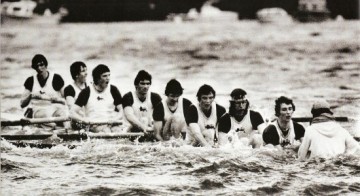 SAS, which is Official Analytics Partner of British Rowing as a metaphor for what it has to do in the new markets, has been showing how data analytics have become crucial in sports..
SAS, which is Official Analytics Partner of British Rowing as a metaphor for what it has to do in the new markets, has been showing how data analytics have become crucial in sports..
It roped in double Olympic champion Helen Glover to row in an indoor practice tank rigged with sensors on the oars and footplates to show that a rower has to push just as much as they pulled.
Using the SAS collected and analysed data to visually illustrate each stroke and show there is always an opportunity to improve performance, even at the elite level, by highlighting inconsistencies, strengths and weaknesses.
Data collection and analytics are now being adopted across many different organisations, and sport has seen a considerable increase in use of data. It is no longer enough to simply record the speed or angle of a boat in the water, but a huge array of different data types are available to SAS to help allow British Rowing athletes to perform at their best and give them the best chance to succeed at international level.
For rowers benefiting from enhanced data analysis, the development has been vital in ensuring peak performance is achieved.
Speaking at an event hosted by SAS, Helen Glover said: “For me, data analytics was fundamental to my build-up to Rio. Having that information about myself, and knowing that I was going to be my best self on the start line was crucial.”
Previous Henley Royal Regatta winner and double Olympic Champion, Glover said that data analytics was crucial as rowers up and down the country prepare for this year’s regatta.
Speaking about the types of data collected, Steve Ludlow, Principal Technology Consultant at SAS UK & Ireland, said: “British Rowing collects all sorts of data that we can help analyse. We can look at data from the sensors on the boat, the biomechanical data including the angles and forces working on the boat, temperature data, and even medical data.”
To put the sheer amount of data collected into perspective, Ludlow described how a new piece of data is collected “every two one thousandths of a second, so if you are doing a session of 24km, then you are collecting gigabytes worth of data [in a single session]”.





